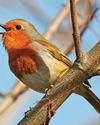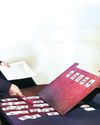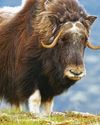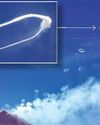
The lonely seal pup is surrounded by a pod of hungry orcas. The hunters circle their prey and the seal's big eyes turn to the camera. Nature documentaries often feature scenes where animals' lives are in danger and filmmakers almost never intervene. "Film crews have to capture events as they unfold, whatever their feelings," says Sir David Attenborough. However, in 2018, a television crew filming the nature documentary Dynasties saved penguins and their chicks from a fierce storm. The birds were trapped in a icy ravine and the crew dug some steps so they could climb out. Their action divided opinions on whether it's right for filmmakers to help endangered animals.
If the question is "should documentary makers ever try to help?", the answer is yes, says Will Lawson, director of Dynasties. "There's no rule book," he told The Times. "You can only respond to the facts that are right there in front of you." Sometimes nature is needlessly cruel; no other animal would benefit from the penguins' deaths, and no human would be harmed in the process.
Doug Allan, a well-respected cameraman, believes that leaving nature to take its course is the most important principle. However, in the case of the penguins and their babies, the crew didn't touch or "spook the penguins", they just improved their chances of getting themselves to safety. Allan told The Guardian that doing this was, "entirely justifiable".
This story is from the Issue 62 edition of The Week Junior Science+Nature UK.
Start your 7-day Magzter GOLD free trial to access thousands of curated premium stories, and 8,500+ magazines and newspapers.
Already a subscriber ? Sign In
This story is from the Issue 62 edition of The Week Junior Science+Nature UK.
Start your 7-day Magzter GOLD free trial to access thousands of curated premium stories, and 8,500+ magazines and newspapers.
Already a subscriber? Sign In

SUGAR RUSH
Join the candy craze as Claire Karwowski studies the sugary science of sweets.

Wildlife watch
Stevie Derrick shows you what to spot in nature this month

The Sixth Sense
Could humans have more than five senses?

Catherine Heymans
Meet the starry-eyed astronomer who loves backyard stargazing.

WORLD OF WHIFFS
Stevie Derrick follows her nose to track down the world's grossest stinks and nastiest niffs.

Dogs can understand names of objects
Humans enjoy talking to their dogs. If you have a four-legged friend of your own, you might have taught them to respond to commands like \"sit\" and \"stay\".

Smoke rings in the sky
In April, videos were filmed of Mount Etna, a volcano on the Italian island of Sicily, puffing what looked like smoke rings into the sky.

Huge gold nugget found
A gold nugget that could be the largest ever found in England was recently put up for auction. Metal detectorist Richard Brock discovered the nugget on farmland during an organised expedition in Shropshire last year.

Evolutionary tree shows birds in a new light
Researchers have produced the most detailed evolutionary tree of birds ever.

The largest plane to ever fly
Take a first look at the mighty Radia WindRunner aircraft